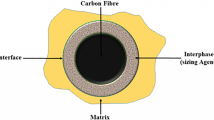Abstract
A series of natural rubber/ butyle rubber NR/ IIR (70/30) loaded with general purpose furnace (GPF) carbon black have been produced on a laboratory scale, and their electrical and mechanical properties were investigated. The percolation threshold concentration has been described using Kirkpatrick and Zallen model. The percolation model gives a suitable explanation, within the experimental data of the studied samples. The thermal stability of composites was also investigated. It was found that the stability of high filler content blend was better than that of low filler content, due to strong polymer-filler interaction at high filler concentrations. Variation of mechanical properties of carbon black-filled compounds with the filler content was also investigated. Electromagnetic interference (EMI) shielding characteristics of these composites were studied. The measurements of shielding effectiveness (SE) were carried out in different frequency ranges from 0.5–5 GHz and it increases with the increase in filler loading. SE values were in the range of 7–30 dB.












Similar content being viewed by others
References
Ghosh P, Chakrabarti A (2000) Eur Polym J 36:1043. doi:10.1016/S0014-3057(99)00157-3
Sichel EK (1982) Carbon black-polymer composites: the physics of electrically conducting composites. Marcel Dekker, New York
Kim SH, Jang SH, Byun SW, Lee JY, Joo JS, Jeong SH, Park MJ (2003) J Appl Polym Sci 87:1969. doi:10.1002/app.11566
Norman RH (1970) Electrically conducting rubber composite. England, Elsevier
Lonergan MC, Severin EJ, Doleman BJ, Beaber SA, Grubbs RH, Lewis NS (1996) Chem Mater 8:2298. doi:10.1021/cm960036j
El-Tantawy F, Dishovsky N (2004) J Appl Polym Sci 91:2756. doi:10.1002/app.13458
Vittibua C, Koon NC, Lubits P, Geopegan JA (1984) J Appl Phys 55:1741. doi:10.1063/1.333461
Chung DDL (2001) Carbon 39:279. doi:10.1016/S0008-6223(00)00184-6
Das NC, Khastgir D, Chaki TK, Chakraborty A (2000) Composites Part A 31:1069. doi:10.1016/S1359-835X(00)00064-6
Shaojina J, Pingkaia J, Zhichengc Z, Zhongguang W (2006) Radiat Phys Chem 75:524. doi:10.1016/j.radphyschem.2005.11.004
Song Y, Zheng Q (2006) Compos Sci Technol 66:907. doi:10.1016/j.compscitech.2005.07.041
Zhanga B, Zhoua Y, Wanga N, Lianga X, Guana Z, Takada T (2005) J Electrost 63:657. doi:10.1016/j.elstat.2005.03.056
Madani M (2004) Polym. Polym. Compos 17:525
Zohdy MH, Madani M, Abd El-Ghaffar MA, Mac J (2004) Sci Part A 41:1321
Shekhar S, Prasad V, Subramanyam SV (2006) Carbon 44:334. doi:10.1016/j.carbon.2005.07.018
Miyasaka K, Watanabe K, Jojima E, Aida H, Sumita M, Ishikawa K (1982) J Mater Sci 17:1610. doi:10.1007/BF00540785
Yi X-S, Wu G, Ma D (1998) J Appl Polym Sci 67:131. doi:10.1002/(SICI)1097-4628(19980103)67:1<131::AID-APP15>3.0.CO;2-4
Kost J, Foux A, Narkis M (1994) Polym Engng Sci 34:1628. doi:10.1002/pen.760342108
Wang Y, Zhang B (2005) J Appl Polym Sci 98:2149. doi:10.1002/app.22387
Das NC, Chaki TK, Khastgir D (2003) J Appl Polym Sci 90:2073. doi:10.1002/app.12811
Lux F (1993) J Mater Sci 28:285. doi:10.1007/BF00357799
Kirkpatrick S (1973) Rev Mod Phys 45:574. doi:10.1103/RevModPhys.45.574
Zallen R (1985) The physics of amorphous solids. Wiley, New York
Flandin L, Hiltner A, Baer E (2001) Polymer (Guildf) 42:827. doi:10.1016/S0032-3861(00)00324-4
Zhang J, Feng S, Wang X (2004) J Appl Polym Sci 94:587. doi:10.1002/app.20721
Sau KP, Chaki TK, Khastgir D (1997) J Mater Sci 32:5717. doi:10.1023/A:1018613600169
Sichel EK (1982). Editor, “Carbon Black-Polymer Composites: The Physics of Electrical Conducting Composites”; Marcel Dekker, New York.
Elwy A, Badawy MM, Nasr GM (1996) Polym Degrad Stabil 53:289. doi:10.1016/0141-3910(96)00090-0
Das NC, Chaki TK, Khastgir D, Chakraborty A (2000) Polym. Polym Compos 8:395
Huang JC, Huang HL (1997) J Polym Engneer 17:213
Treloar LRG (1975) The Physics Of Rubber Elasticity, 3rd edn. Clarendon Press, Oxford
Kurian T, De PP, Khastgir D, Tripathy DK, De V, Peiffer DG (1995) Polymer (Guildf) 36:3875. doi:10.1016/0032-3861(95)99781-O
Smallwood HM (1944) J Appl Phys 15:758. doi:10.1063/1.1707385
Kontou E, Spathis G (1990) J Appl Polym Sci 39:649. doi:10.1002/app.1990.070390315
Jing X, Wang Y, Zhang B (2005) J Appl Polym Sci 98:2149. doi:10.1002/app.22387
Acknowledgement
Thanks are due to Dr./ K.A.A. Sharshar for providing us with his EMI set-up.
Author information
Authors and Affiliations
Corresponding author
Rights and permissions
About this article
Cite this article
Madani, M. Conducting carbon black filled NR/ IIR blend vulcanizates: Assessment of the dependence of physical and mechanical properties and electromagnetic interference shielding on variation of filler loading. J Polym Res 17, 53–62 (2010). https://doi.org/10.1007/s10965-009-9289-4
Received:
Accepted:
Published:
Issue Date:
DOI: https://doi.org/10.1007/s10965-009-9289-4




